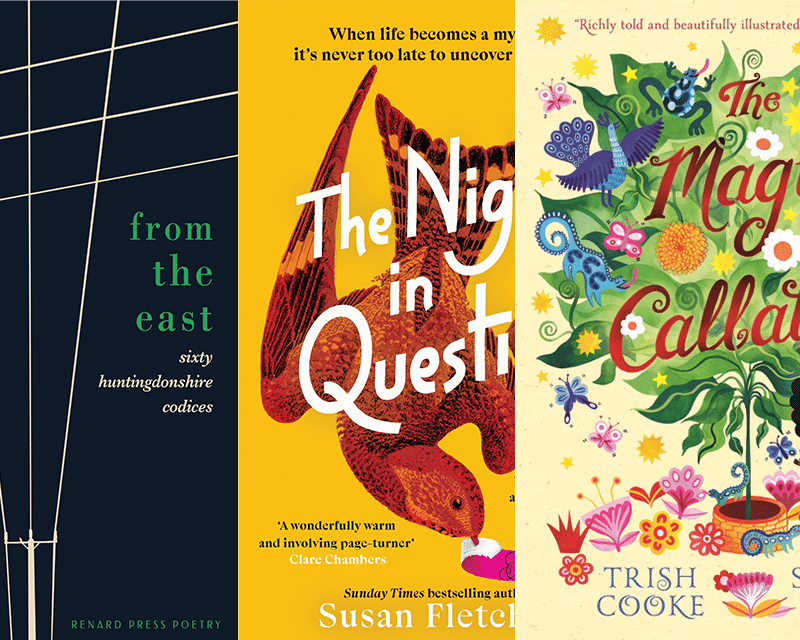- Collected
- Article
Scientific Outsider Syndrome
The value and challenges of science writing

- 10 May, 2021
- Brian Clegg
The transformation of our lives in 2020 by the COVID pandemic has shown the importance of understanding science and mathematics in our everyday lives. This is nothing new, but the need to get our heads around vaccine mechanisms and medical statistics has opened many eyes. ‘Following the science’ has become a mantra. Yet this isn’t the easiest thing to do because, frankly, science speaks a different language. We don’t just need ‘the science’, we need translators. Which is where people like me – science writers – come in.
It’s not just about life and death issues, though. Ideally, science should engage our sense of wonder. It tells us about the way the universe works. When I speak to junior school children, they all love science. But something happens to many students when they’re in their early teens: it’s no longer cool to show an interest in the world around you. Science writers have the job of bringing that sense of wonder back.
Communicating science, then, should be an essential role. However, as a science writer – as opposed to a working scientist – I am vulnerable to Scientific Outsider Syndrome. I am a writer first, with a rusty Natural Sciences degree very much second. I am always conscious that my knowledge is limited, always worried that an expert will spot a silly mistake, the obvious error, when I am doing the job of acting as intermediary between scientist and public.
The broadcast media don’t always help: it is rarely understood that science communication is a real job. I once spent a whole day recording segments explaining science topics for a BBC TV show. I agreed to do this for free as the subjects were related to a book I’d recently written, only to discover that, due to BBC regulations, my book was not allowed to be mentioned. (In one shot I am pictured reading it, but the title was blurred out as if it were pornography.) The next year they asked me to record some more, but as soon as a fee was mentioned, the offer disappeared.
Nevertheless, despite the concerns of being second-class citizens of the science world, I would suggest that science writers have a vital role to play. This is because the majority of scientists are not very good at communicating with the public. Academic writing can be formalised, prioritising precision over quality, and laden with jargon. This is not a bad thing — between scientists, jargon is a shorthand that saves a huge amount of time and effort. However, it’s a significant barrier when writing for the public.
Of course, some scientists are great communicators, but the fact remains that most aren’t, and in the end it’s not their job. Even when, for example, a science book by a professional scientist becomes a bestseller, it does not necessarily mean that it communicates well. Infamously, Stephen Hawking’s A Brief History of Time proved unreadable to many of its purchasers. Science writer Philip Ball likens it to ‘a Latin liturgy filled with terms the readership only half-understood,’ playing to ‘the unhelpful notion that science is really hard and only for super-humans like [Hawking].’ And the published version was vastly improved on Hawking’s original text. Ball notes that the book ‘only became remotely readable through the intense effort of assistants and science writers enlisted by the publisher to translate Hawking’s dense and plodding prose.’
When it comes to writing, there are two traps that scientists fall into; this is where science writers can help. The first is negotiating the knife edge between over- and under-simplification. Science depends on precision and clarity. But in putting across a complex concept from physics or biochemistry, say, there needs to be an appropriate level of simplification, avoiding detail and providing the heart of the theory or discovery without getting bogged down.
For biologists, the temptation is to provide labels for everything, even if they convey nothing to the reader and make no contribution to the narrative. When the great twentieth-century physicist Richard Feynman was a postgrad at Princeton, he attended a graduate course in cell physiology. Attendees were required to give reports on papers and Feynman was assigned one on electrical activity in the nerves of cats. He began his presentation by identifying various muscles, only to be told that the students already knew all that. Feynman responded ‘Oh, you do? Then no wonder I can catch up with you so fast after you’ve had four years of biology.’ As he pointed out, they had wasted their time memorising labels that could be looked up in minutes.
If it seems like physicists (my own speciality) are getting an easy ride here, their understanding of the universe is so driven by mathematics that they often struggle to see past this to anything that non-physicists can get their heads around. A while ago, I hit up against this in attempting to solve something of a mystery in the way Einstein’s masterpiece, the general theory of relativity, is described to the public. The theory explains how matter warps space and time, producing gravity.
The traditional analogy for the general reader imagines a bowling ball placed on a taut rubber sheet. The ball produces an indentation. If we think of the sheet as space, then what had been a straight line passing through the rubber near to the ball (representing a massive body, such as the Sun) will become a curve — which neatly explains why, for example, the Earth, which would otherwise travel in a straight line, ends up orbiting the Sun. But this picture entirely fails to explain why an object that starts off stationary above the Earth accelerates towards it. (You can’t say it slips down the indentation in the rubber of space near Earth’s bowling ball, because the only reason something slides down an indentation is gravity — it’s a circular argument.)
I asked a wide range of physicists to give me an explanation. Almost all of them either couldn’t understand the question or could only reply using mathematics. The closest I got to a useful answer, from Friedrich Hehl of the University of Cologne, was to say that ‘In spacetime the 4-velocity of a particle is just the tangent unit-4-vector of the path traced by the particle. Since a curve in the sheet at a certain point has always a tangent 4-vector, the particle has to follow the path with the corresponding 3-velocity.’ It’s obvious, then.
After some probing, Hehl finally provided an explanation that made sense to a non-physicist. We have to remember that the distortion was not in space, but in spacetime. Time as well as space is warped, and it is the distortion of time that produces the motion. On its own, the rubber sheet model over-simplifies to the extent it no longer has value.
The second trap for would-be communicator scientists is forgetting the power of storytelling. We are hard-wired to receive information through stories — and a story is more than a collection of observations and deductions. To put science across well, the narrative structure is key. Scientists sometimes criticise science writers for picking out lone researchers in history, making them the heroes of the story. And it’s true that all scientists build on the work of others, while modern science is sometimes undertaken by teams of hundreds or even thousands. But the complaint misses the point. Bringing in the lives of scientists gives human context to the story. And this can’t work with a cast of thousands. Selectivity may be unfair to those who get missed out, but it is essential to do the job.
Give some thought, then, to the science writers of this world. We don’t always get it right. We remain outsiders, secondary to the real scientists. But without our ability to translate the science, and to weave a story around the facts, the science that is crucial to everyday life would remain a mystery to most. Which would be sad indeed.
You might also like:
No facts, only versions
Memoirs are as much about what is excluded as what is included. This edition examines how you can evoke the…
RLF Fellows’ News: April 2024
Publishing News RLF Fellow Trish Cooke’s new children’s book, The Magic Callaloo, is set to be published by Walker Books…
Susan Fletcher on outsiders in fiction – literal and imagined
I’ve always known that I’ve preferred to be outside. To be an outsider – literally, and, specifically, amongst wild places…


